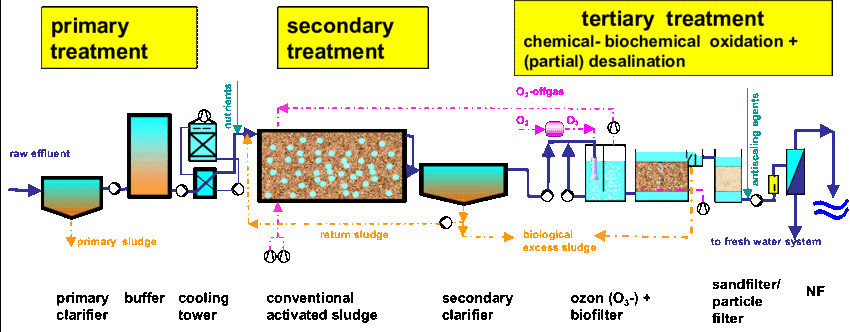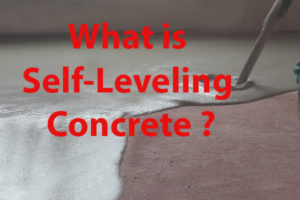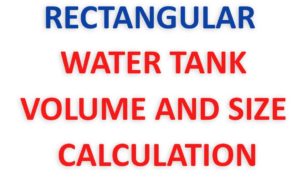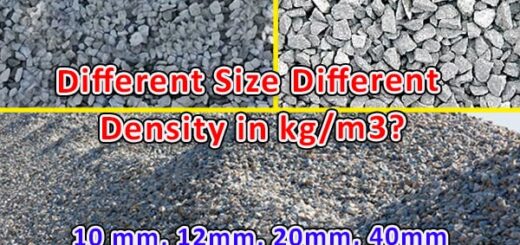Different Methods of Wastewater Treatment
Wastewater Treatment
Wastewater treatment is a procedure of removing all the pollutants in the form of organic matter and cleaning domestic water and sewage. Water is treated with the purpose of reusing the water either by humans or animals or for any other purposes.
Water discharged from houses, factories, or industries is made to enter sewers. Water from rains enters stormwater sewers. Water from these sewers reaches the wastewater plant by means of gravity flow.
With the increase in population, water resources have been impacted severely. Innovative technologies are required to treat wastewater for pollution. There is an increased need of having oxidation methods, chemical precipitation, adsorption on various media, etc. to separate contaminated pollutants from wastewater.

Various stages of wastewater treatment:
-
Pre-treatment:
Pre-treatment of wastewater is done prior to discharge from industries or factories. This treatment is required to avoid the discharge of any chemicals surplus nutrients from the wastewater.
-
Preliminary Treatment:
Preliminary treatment is done to remove large objects/debris and non-degradable objects from the wastewater. This treatment saves the equipment from any kind of damage. The assembly for this treatment has a bar screen, mesh screen, and grit chamber to remove garbage.
-
Primary Treatment:
It is a physical process that is done to remove any suspended sand particles from wastewater. The velocity of wastewater is reduced so that all the suspended particles settle down due to gravity force. The settled material is called “Biosolids” or sludge.
-
Secondary Treatment:
It is a biological process that makes use of microbes/ bacteria and algae to absorb the organic matter present in wastewater. Microbes consume all the organic impurities and convert them into Carbon dioxide, water, or energy for their own growth.
-
Disinfection:
This is sometimes stated as the tertiary treatment. Generally, Chlorine and chloramines are used for the wastewater treatment for the disinfection process. Sometimes, UV radiations are used to disinfect the water.
-
Sludge (biosolids) Disposal:
The final stage of wastewater treatment is removing sludge or biosolids. The by-products of these sludge are often used for agricultural purposes.
Methods of wastewater treatment:
-
Biological Wastewater Treatment:
When we need water to be used for drinking or for human consumption purposes, it needs to be cleaned extensively. To meet this requirement, the Biological treatment of wastewater is done. Biological treatment involves the use of micro bacteria that decompose the waste material or organic impurities and improve the quality of water to be used for households.
There are three methods of biological treatment:
- Aerobic Process: In the aerobic process, bacteria decompose and devour the organic impurities of wastewater and convert it to CO2 for reproduction and growth. Oxygen is required during this process.
- Anaerobic Process: In the Anaerobic or fermentation process, waste or sludge present in the wastewater is fermented at a specified temperature. Oxygen is not required during this process.
- Composting: Composting is a kind of Aerobic process, in which sludge or biosolid is mixed with carbon sources in the presence of Oxygen to remove all the impurities.
-
Physical Wastewater Treatment:
Physical wastewater treatment uses physical approaches to remove impurities. There are three important physical methods that are used to clean water:
- Sedimentation: Sedimentation is a procedure of removing insoluble debris from the water. The first unit of sedimentation tank is known as “primary sedimentation tank” or “primary settling tanks” where solids or dense materials like stones, dust particles, debris are removed by gravity force, and other less dense particles are carried to the next tank.
- Aeration: In this method of water treatment, the air is made to circulate through the water to give it oxygen to increase its Bio-Oxygen Demand.
- Filtration: This method is used for filtering out impurities present in wastewater. A special filter with great capacity is used for this treatment. The most common filter used is Sand Filter.
-
Chemical Wastewater Treatment:
Chemical wastewater treatment uses various chemicals in order to clean water. Generally, Chlorine is used to treat sewage because it acts as an oxidizing chemical to kill harmful bacteria. This process is known as chlorination. Ozone is also an oxidizing disinfectant that works to destroy viruses and harmful bacteria in the water. To treat industrial wastewater, the Neutralization method is used. In this method, base or acid is mixed with water till it reaches the pH value of water. Generally, lime is used as a base to neutralize acidic water.













